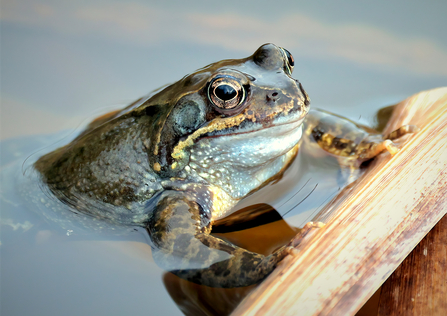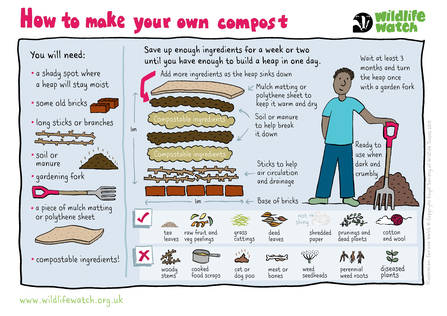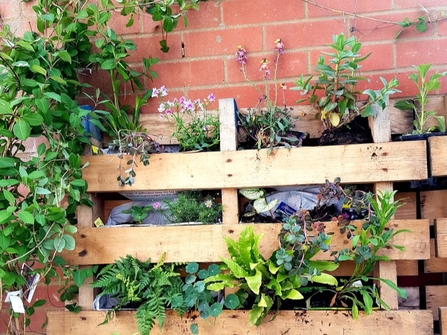Welcoming spring into your garden this April
Bluebell and bee by Jon Hawkins - Surrey Hills Photography
April is an active month in the natural world. Our gardens have suddenly erupted into life after the recent sun and rain, and the early signs of spring have given way to wildlife’s earnest return. Birds are scouting for nesting spots, bees are reemerging, and frogs and newts are heading for water. This time of year, there are plenty of things to be doing on your doorstep to give nature a helping hand. Wildlife gardening doesn’t have to be complicated or require lots of space; just a few small acts can make all the difference on your patch.
Living lawns have a cooling effect on the local environment and their permeability reduces the risk of flooding. Photo by Nick Upton
Mow less, grow more
If you can, put the lawnmower away for a while. We have grown so accustomed to manicured lawns that we neglect the beauty of untouched grass. The spring “weeds” that appear at this time of year, like dandelions and daisies, are early lifelines for pollinators. Leaving a patch of lawn to grow can provide vital food and shelter for insects and small mammals, as well as looking effortlessly good.
Be gentle with spring cleaning
It’s tempting to tidy every corner, but hold off on clearing leaves, dead stems and log piles just yet. These quiet spaces are important shelters for insects, frogs and even hedgehogs waking from hibernation. This time of year can be unpredictable for emerging wildlife as food may be scarce after winter. Leaving some areas a little messy offers small creatures safety and encourages their food chain to regain its strength.

Common frog by Jessica Crumpton, Letcombe Brook, Oxfordshire
Think about water
Adding water, whether it’s a full pond or a shallow dish, invites a wide range of species. April is peak time for amphibians, so if you already have a pond, you might spot frogspawn or even your first newt of the year. If you haven’t got a body of water in your garden, the good news is that it really doesn’t need to be big. Consider digging a bucket, such as a washing up bucket, into the ground and filling it with water. Remember to include a ramp of some sort to offer amphibians exit routes out of the water.
Plant for pollinators
Create your own mini meadow of bright and colourful annual flowers that the bees and butterflies will love. Red poppies, blue cornflowers, mauve corncockles, golden tagetes and yellow corn marigolds will brighten up your borders and veg patches from summer into autumn. Sow seeds now direct onto prepared soil, water them in and cover with sticks to make sure you remember where the patch is before the seedlings emerge. Remember to choose peat-free compost if you’re planting as it’s better for the planet and for our local wildlife.

Mulch your plants and soil
A layer of mulch made from compost or well-rotted manure can help retain moisture, enrich your soil, and support the invertebrates that birds and other creatures rely on. If you’ve made compost throughout the autumn and winter, now is the time to feed your trees and shrubs with it. Just take care when emptying and turning compost heaps to make sure any hedgehogs and grass snakes have moved out.
Capture the rain
Spring showers are an ideal opportunity to install a water butt. It’s an easy way to save water and help your garden cope with dry spells later in the year. You can make your own mini water butt by cleaning a large (6L or more) milk or water bottle, cutting the base, and attaching it, lid-side down to a fence with a bit of twine. When it rains the water will collect in it and you can unscrew the lid to fill up a watering can.

Pallet garden by Hannah Aphil
Even the smallest garden, balcony, or community green space can play a part in helping nature thrive. By working with the seasons, you’ll see more birds and bees and you’ll help to restore the balance of Oxfordshire’s natural world.

